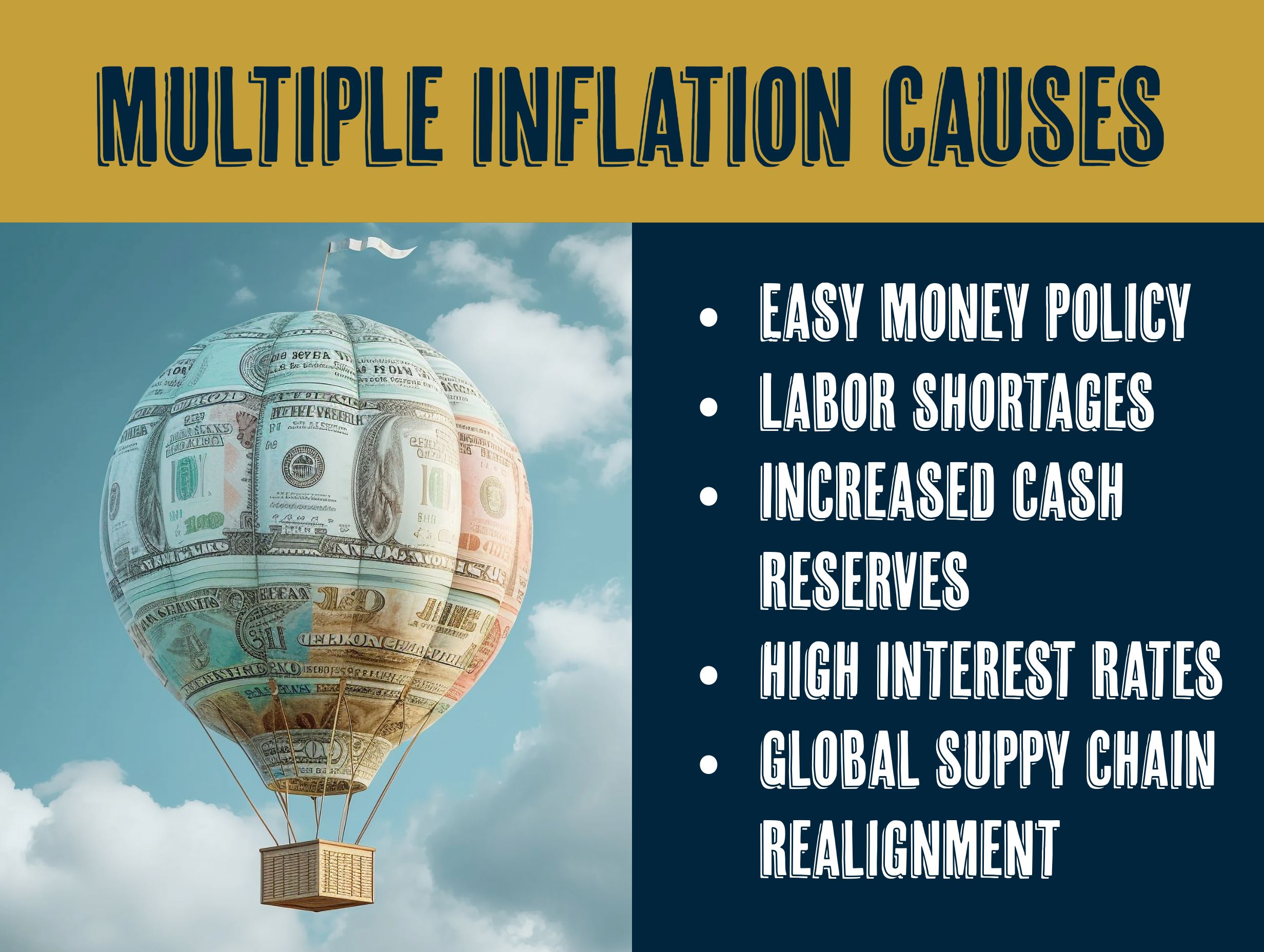
Key Takeaways
- Multiple Inflation Causes: Factors like labor shortages and the Federal Reserve’s “easy money” policy during the pandemic contribute to inflation.
- Increased Cash Reserves: The rise in private bank account cash levels from 2012 to 2022 enhances consumer and business purchasing power, affecting market prices, including real estate.
- Interest Rates Impact: Higher interest rates benefit savers and influence real estate values. Investors need to achieve higher operational revenues to profit from properties bought at lower cap rates.
- Strategic Investment Approach: Successful real estate investment requires operational efficiencies, investing in promising locations, and choosing properties that can demand higher rents. Rational leverage is crucial for maximizing returns while managing risks.

Read thirty articles written by 30 economists, and you will see 30 different theories with varying amounts of overlap. Some relevant ones are labor shortages, which result in higher costs for producers of goods and services. I previously wrote that labor intensive businesses would face elevated costs for the foreseeable future in light of the low birth rate and overburdened immigration system.
Other economists will point to the excessive amount of money the Federal Reserve created during the pandemic, the so-called “easy money.” This is definitely a contributing factor, and when compared to Western Europe, where stimulus was less so, their inflation has dropped more rapidly than the US.
But I ask myself what the root cause behind all of the contributing factors is, and to me, that’s cash. How much do people and businesses have, and is it more or less than it was pre-pandemic? This is especially important in this high-interest rate environment, which is, by definition, inflationary for savers. Those with cash earn more interest than they have in nearly a decade. Maybe that’s why housing prices have stayed high, as homebuyers have more downpayment money from interest earned on savings accounts. Then I read a succinct article by Ruhcir Sharma entitled “The overstimulated superpower,” in which Mr. Sharma outlines that, among other things, there is more cash in accounts in the US than there was pre-pandemic, a lot more, as it turns out. In May of 2012, a year of stimulus in response to the great recession, M2 was $9.928 trillion dollars. Fast Forward 10 years to May of 2022, which, as I read it, was the peak amount of cash in privately held bank accounts in the amount of $21.69 trillion, a 2.18 multiple in ten years. That is a lot of buying power, and combined with a labor shortage, global supply chain realignment to higher cost but less politically risky countries and we have the recipe for growth.
What does this mean in terms of real estate investment strategy? Of course, the answer is that it always depends on the investor’s goals. Is it wealth preservation, wealth building, steady income, tax strategizing, or all of the above? With the interest rate backdrop unlikely to become significantly friendlier to real estate, the in-place yields and business plan execution are more important than ever. Otherwise, if you buy a 5% cap rate property, and rates move to six percent at the end of the hold period, the operator would have needed to drive revenues such that the cap rate based on the original purchase was 6% or more to break even. Profit would require it be moved even higher since interest rates cannot be counted on to provide a tailwind, and let it be said, nor should they ever. This is why I’ve always pursued properties that offer multiple opportunities for value creation. First is operations; can we upgrade the systems to reduce expenses as we have on many projects materially? Second, is the property located in the path of progress such that rents will keep up with or exceed inflation, and lastly, will the tenant base absorb high rents in exchange for an upgraded place to call home? If you can check all those boxes, along with rational amounts of leverage, this may be the best time to buy in more than a decade.










